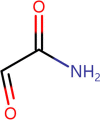Acrylamide toxicity in aquatic animals and its mitigation approaches: an updated overview
- PMID: 37867167
- PMCID: PMC10721689
- DOI: 10.1007/s11356-023-30437-4
Acrylamide toxicity in aquatic animals and its mitigation approaches: an updated overview
Abstract
Acrylamide (ACR) is widely applied in various industrial activities, as well as in the water purification process. Furthermore, ACR is synthesized naturally in some starchy grains exposed to high temperatures for an extended time during the cooking process. Because of its widespread industrial usage, ACR might be released into water stream sources. Also, ACR poses a high risk of contaminated surface and ground-water resources due to its high solubility and mobility in water. Furthermore, animal studies have indicated that ACR exposure may cause cancer (in many organs such as lung, prostate, uterus, and pancreas), genetic damage (in both somatic and germ cells), and severe effects on reproduction and development. Recently, numerous studies have shown that ACR has a mild acute cytotoxic impact on aquatic species, particularly during early life stages. Besides, wide-spectrum usage of ACR in many industrial activities presented higher environmental risks as well as major hazards to consumer health. This literature was designed to include all potential and accessible reports on ACR toxicity related with aquatic species. The Preferred Reporting Items for Systematic Reviews were applied to evaluate the risk effects of ACR on aquatic organisms, the ACR sub-lethal concentration in the ecosystem, and the possible protective benefits of various feed additives against ACR toxicity in fish. The major findings are summarized in Tables 2 and 3. The primary aim of this literature was to specify the hazards of ACR toxicity related with fish welfare and possible suggested strategies to reduce its risks.
Keywords: Acrylamide; Biodegradation; Environmental contamination; Fish welfare toxicity; Phytochemical.
© 2023. The Author(s).
Conflict of interest statement
The authors declare no competing interests.
Figures
References
-
- Abatenh E, Gizaw B, Tsegaye Z, Wassie M. The role of microorganisms in bioremediation-a review. Open J Environ Biol. 2017;2:038–046. doi: 10.17352/ojeb.000007. - DOI
-
- Açar ÖÇ, Pollio M, Di Monaco R, Fogliano V, Gökmen V. Effect of calcium on acrylamide level and sensory properties of cookies. Food Bioprocess Technol. 2012;5:519–526. doi: 10.1007/s11947-009-0317-5. - DOI
Publication types
MeSH terms
Substances
LinkOut - more resources
Full Text Sources
Medical



